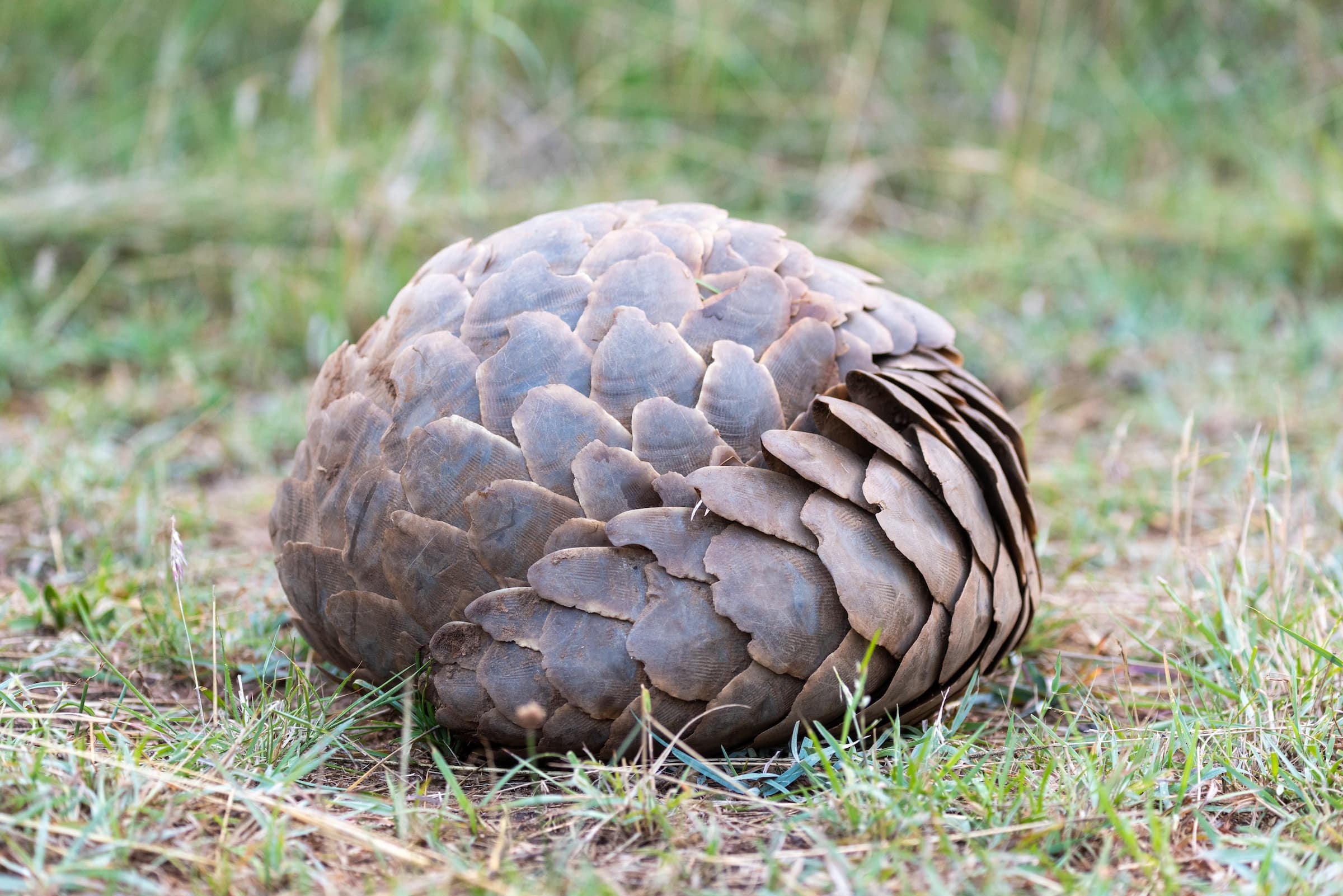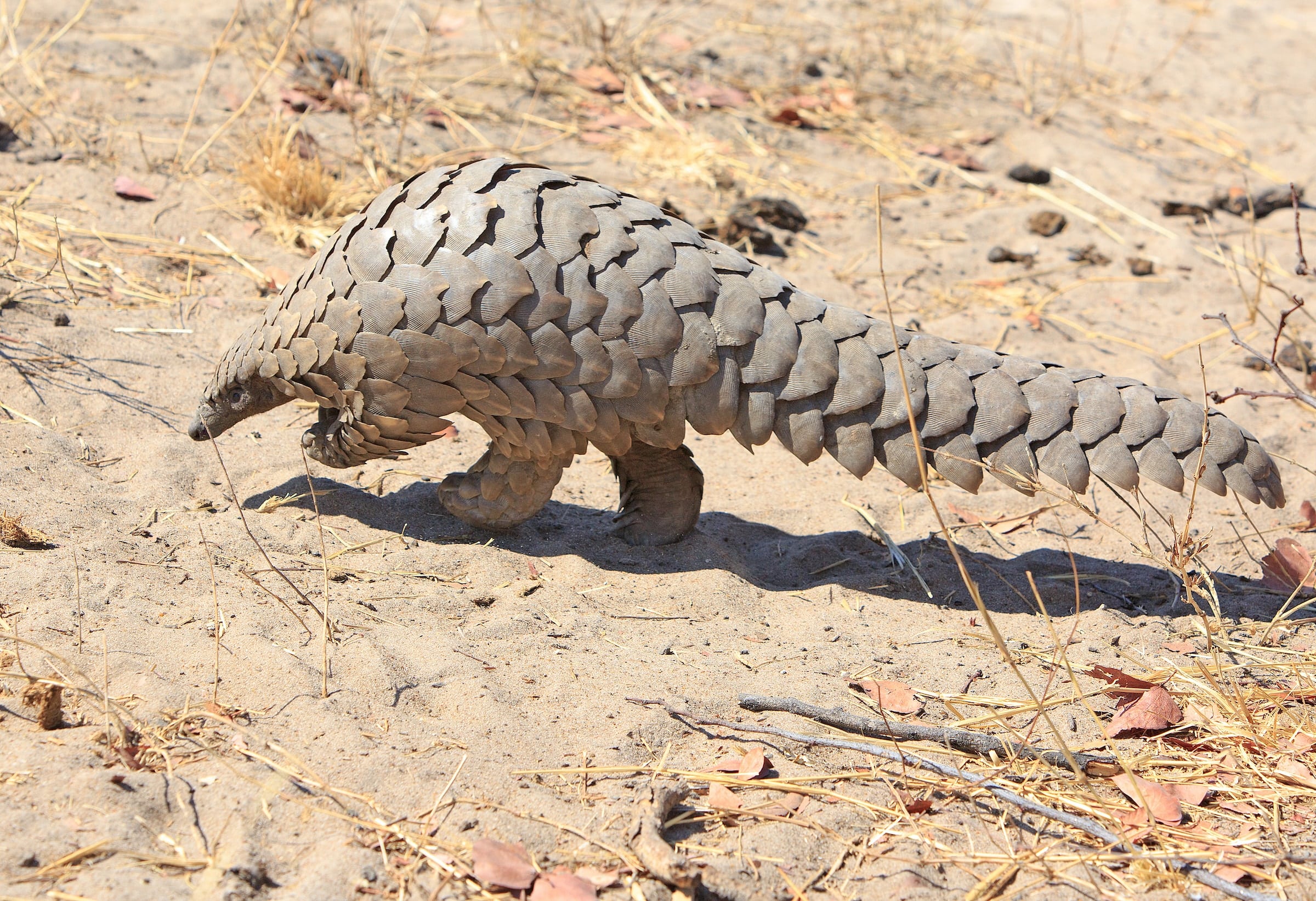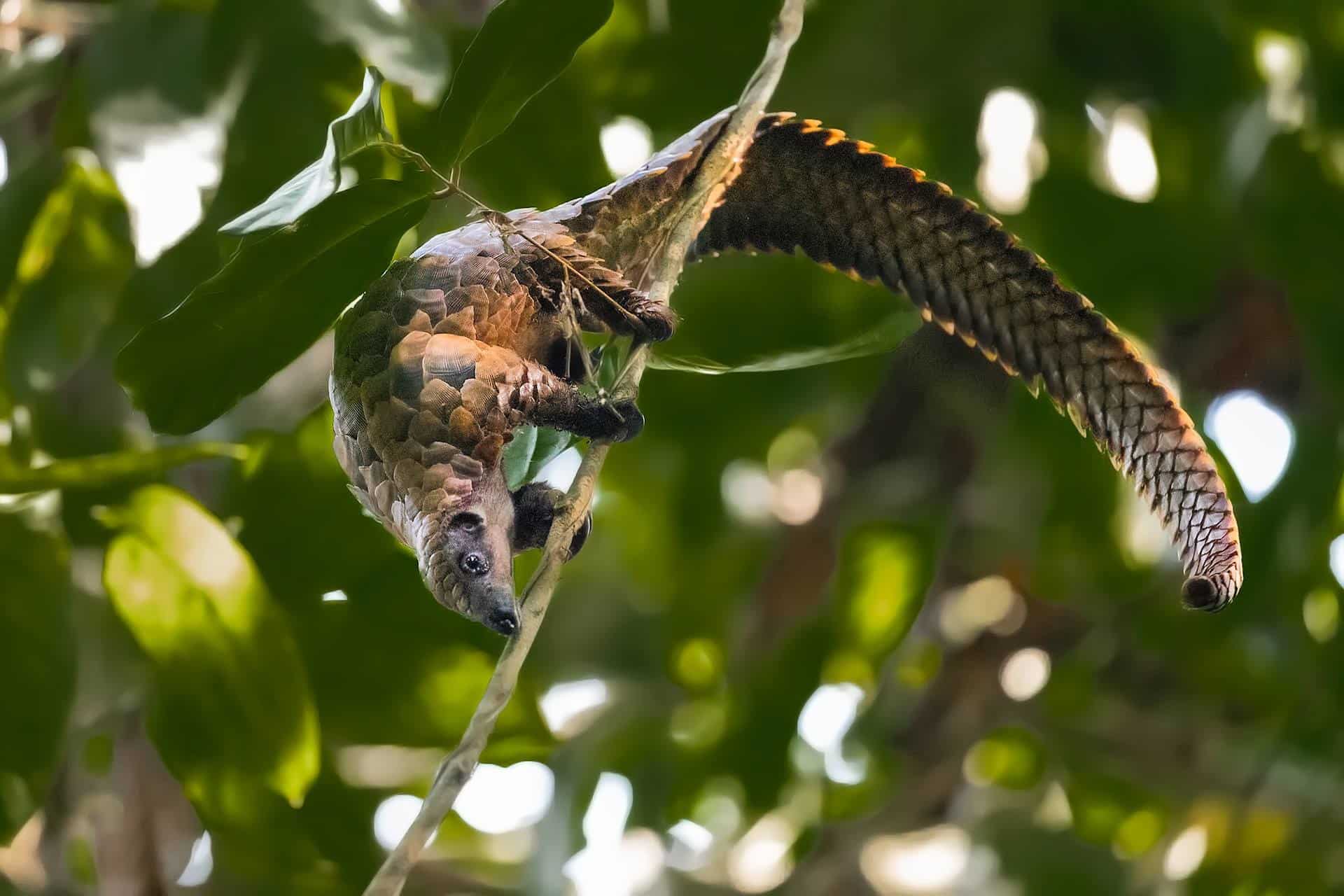Pangolins have long, armored tails that serve them in a variety of ways. This tail is a critical defense mechanism for all pangolins against threats. When pangolins are in danger, their tails tighten and seal them into armored balls, shielding their face and soft underside. Female pangolins keep vulnerable young nestled against their underbelly with their tail wrapped around them when threatened. For females, scaled tails are also a nursery for their young, who cling to them tightly, ready to be quickly wheeled in and guarded against most danger.

For ground-dwelling pangolins, their heavy tails are also used as a counterbalance when walking, as these pangolins frequently travel bipedally on their hindlimbs. Pangolin forelimbs are equipped with strong, curved claws, useful for digging but cumbersome to walk on. Ground-dwelling pangolins tend to walk upright with their tail off the ground, resting their two front paws upon one another. When they walk on all fours, pangolins fold their claws inward and walk on their knuckles, leaving behind distinctive footprints.

For arboreal pangolins, like Asia’s Sunda pangolin or Africa’s black-bellied pangolin, their semi-prehensile tails serve as an extra appendage to help them grasp branches and traverse through the forest canopy. Arboreal pangolins also use their tails, cushioned by a generous underpad, to hang from tree branches as they tear through tree bark to expose ant nests.


